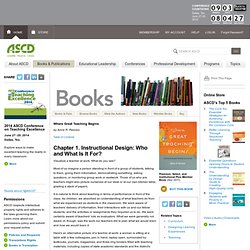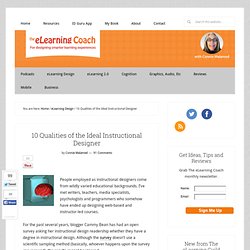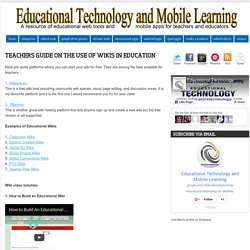

SmartBlogs SmartBlogs. “When are we ever going to use this?” When I was a teacher, this was a question I heard almost daily. I would imagine that has not changed much since I left the classroom five years ago, particularly when it comes to math. Students are naturally inquisitive about what they are learning and why, as they should be. However, as teachers continually make a concerted effort to connect mathematics and common, everyday occurrences in students’ lives outside of the classroom, this question will go the way of the chalkboard. So, to answer a question with a question: What are students doing when not at school?
Game-based learning Students don’t just play board games like they used to, instead they look to find those same “board” game in Web-based or app format to download to a phone, tablet, etc. At the end of a long day, a tired first grade student lifts her chair, flips it over and lays the seat down on the top of her desk. (read more…) Location, location, location. Module A. The Big Ideas of UbD. As its title suggests, Understanding by Design (UbD) reflects the convergence of two interdependent ideas: (1) research on learning and cognition that highlights the centrality of teaching and assessing for understanding, and (2) a helpful and time-honored process for curriculum writing (Wiggins & McTighe, 2005).

UbD is based on eight key tenets: UbD is a way of thinking purposefully about curricular planning, not a rigid program or prescriptive recipe. Citl.indiana.edu/files/pdf/case_studies_disruptive_student_behavior.pdf. Rapid Instructional Design. Thiagi.com.

Search Results for "instructional design" Instructional Design: Who and What Is It For? By Anne R.

Reeves Visualize a teacher at work. Instructional Design Models. The following is a list of prescriptive instructional design models.

Prescriptive models provide guidelines or frameworks to organize and structure the process of creating instructional activities. These models can be used to guide your approach to the art or science (your choice) of instructional design. 10 Qualities of the Ideal Instructional Designer. Sharebar People employed as instructional designers come from wildly varied educational backgrounds.

I’ve met writers, teachers, media specialists, psychologists and programmers who somehow have ended up designing web-based and instructor-led courses. For the past several years, blogger Cammy Bean has had an open survey asking her instructional design readership whether they have a degree in instructional design. Although the survey doesn’t use a scientific sampling method (basically, whoever happens upon the survey can respond), the results cannot be ignored. The survey results are no longer available, but in 2009, these were the results: E-Learning & Instructional Design 101. There’s a lot of debate about instructional design and whether or not you need a formal education to create effective elearning.

We looked at that in a previous post (which includes some good discussion in the comments section). Intro to Instructional Design. Instructional technology is a systematic way of designing, developing, implementing, and evaluating the processes of learning and teaching with specific objectives based on research in human learning and communication.

Why Online Courses [Really] Need an Instructional Design Strategy. In this post I examine and define instructional design, and share why it’s essential to the development of online courses.
![Why Online Courses [Really] Need an Instructional Design Strategy](http://cdn.pearltrees.com/s/pic/th/instructional-strategy-57124576)
“Design brings forth what would not come naturally“ Klaus Krippendorff Developing an online course that is engaging, promotes interaction, motivates learners, and above all facilitates learning is easier said than done. It’s even more challenging when trying to modify a face-to-face course for the online format. I know because I worked at a four-year college as lead curriculum designer. 5 Ways To Really Connect With Online Students. Thanks to the increasing popularity of online courses, universities and students are no longer restricted by physical boundaries.

For schools, this means they can have greater enrollment in highly sought-after programs that would otherwise have limited space. Students benefit by having the opportunity to enhance their education without having to pack up and move their entire lives to a different city. From parents to working professionals, students of all types are enthusiastic about online education — as long as it’s done right. Historically, however, online classes have not been very good experiences, with outcomes being marginal at best. Here are five ways instructors can connect with their students, making sure the online education experience is worthwhile for everyone: Be Engaging In online education done the right way, there is no back row.
Be Available Students of online courses need to have access to their instructors, just like their on-campus peers. Teachers Guide on The Use of Wikis in Education. Here are some platforms where you can start your wiki for free.

They are among the best available for teachers : 1- Wikispaces : This is a free wiki host providing community wiki spaces, visual page editing, and discussion areas. It is my favourite platform and it is the first one I would recommend you try for your class. 2- PBworks This is another great wiki hosting platform that lets anyone sign up and create a new wiki but the free version is ad-supported. Examples of Educational Wikis. Topics - Common Core, Differentiated Instruction, 21st Century Skills. The 12 Learning Principles Video Games Promote. I am presently reading a book called What Video Games Have to Teach Us About Learning and Literacy. Second Edition: Revised and Updated Edition by James Paul Gee ( one of America's most respected educators ).
In this work, Paul Gee argues for the importance of GOOD video games in learning. 6 Easy Steps to Use Gamification in Your Classroom. Course Introduction: IT&D 555 Instructional Design. Part 1: Cognitive Theories of Multimedia and Instructional Design.